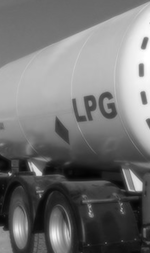LPG - Liquefied Petroleum Gas
LPG or Liquefied Petroleum Gas.

LPG is a hydrocarbon mixture in either liquid or gaseous state where the main components consists of
- propane - C3H8
- propylene (propene) - C3H6
- isobutane - C4H10
- n-butane - C4H10
- butylene (butene) - C4H8
Liquefied Petroleum gas - LPG - is gaseous under normal atmospheric conditions, but liquefied by cooling and/or compression.
LPG is commonly used as an industrial fuel for domestic and commercial purposes like town gas and autogas. LPG is also used as feedstock in chemicals plant processes.
Related Topics
-
Combustion
Combustion processes and their efficiency. Boiler house and chimney topics. Properties of fuels like oil, gas, coal and wood and more. Safety valves and tanks. -
Gases and Compressed Air
Properties of air, LNG, LPG and other common gases. Pipeline capacities and sizing of relief valves.
Related Documents
-
Condensate Pumping
High temperatures and danger of impeller cavitation is the major challenge for condensate pumping in steam systems. -
Gases - Gross and Net Heat Values
Gross heat and net heat values for gases like hydrogen, methane and more. -
Liquids and Gases - Boiling Points
Boiling temperatures for common liquids and gases - acetone, butane, propane and more. -
LNG - Liquefied Natural Gas
LNG or Liquefied Natural Gas. -
LPG Pipes - Pressure Loss vs. Gas Flow
Resistance and pressure loss in liquid LPG pipes. -
LPG Tanks - Relief Valves Capacities
Required capacities of relief valves on LPG vaporizers and tanks. -
Propane - Latent Heat of Vaporization vs. Temperature
Latent heat with vaporized propane. -
Propane Air Mixture
Energy content and specific gravity of propane air mixtures. -
Propane Butane Mixture - Evaporation Pressure
Evaporation pressure of propane butane mixture vs. temperature.




